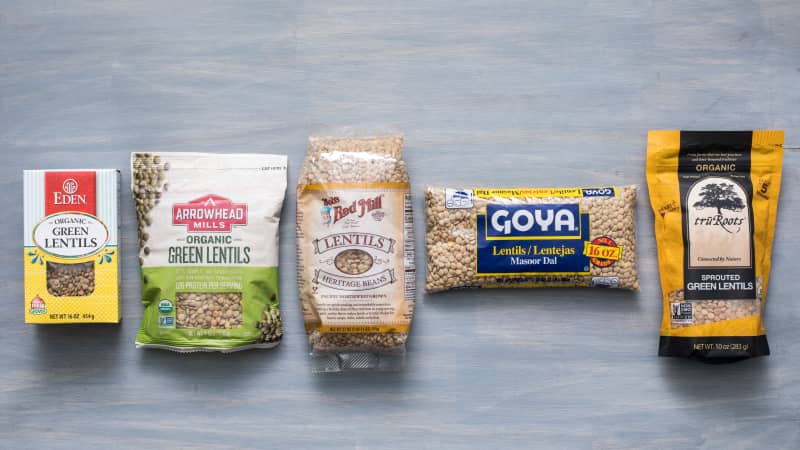Lentils
Taste Test
Lentils are the perfect pantry staple: inexpensive, elegant, and packed with nutrients. Which are best?
Published Aug. 19, 2019. Appears in America's Test Kitchen TV Season 22: Ode to Armenia

Lentils are among the most versatile foods in our pantry. We use them for soups and stews, in salads and rice pilaf, and in classic pairings with proteins such as salmon, pork chops, and sausages. Although we like tiny, firm French lentilles du Puy and vibrant, tender red lentils, our recipes call for them only on occasion. More often we reach for brown or green lentils, which we’ve found are similar enough in flavor and texture to be used interchangeably in recipes. We like that these lentils are inexpensive and easy to find and tend to hold their shape when cooked. But which ones are best? We purchased five kinds of lentils labeled as brown, green, or simply “lentils,” priced from about $1.50 to about $6.00 per package, and sampled them in three blind tastings: plain, in a hearty vegetable soup, and tossed with vinaigrette in a simple salad.
When we cooked the lentils plain on the stovetop, their flavors were mild but still pleasant. But when we added salt and mixed them with other ingredients in soup and salad, their earthy and nutty flavors really came through. Tasters said that the flavors reminded them of the mild sweetness of green peas or beans. Only one product stood out slightly: It was sprouted, or germinated, which the company says partially breaks down the lentils’ protective coating so that they cook more quickly and have more nutritional benefits. In addition to tasting earthy and sweet, the sprouted lentils had a mild mushroomy and sesame-like flavor. It surprised us, but we liked it.
Although the lentils tasted more or less the same, their textures varied dramatically. When we followed the instructions on the lentils’ packaging—boiling or simmering them on the stovetop until tender and then draining them—several became disappointingly soft and mushy. The sprouted lentils cooked quickly, but they also split open and looked messy. Two other products also became very soggy. Even the high scorers weren’t as firm as we wanted. We also noticed inconsistencies within individual samples: Some lentils were soft, while others were still almost crunchy.
All the lentils were better when we used the cooking instructions in our recipes. Though the soup recipe also called for simmering the lentils on the stovetop, the lentils’ textural flaws weren’t as readily apparent when mixed with the escarole and tomatoes. The texture of the lentils improved in the salad tasting because the recipe calls for two test kitchen tricks: soaking the uncooked lentils in a saltwater solution to tenderize their skins and prevent blow-outs as ...
The mission of America’s Test Kitchen Reviews is to find the best equipment and ingredients for the home cook through rigorous, hands-on testing.

Kate is a deputy editor for ATK Reviews. She's a culinary school graduate and former line cook and cheesemonger.

This is a members' feature.